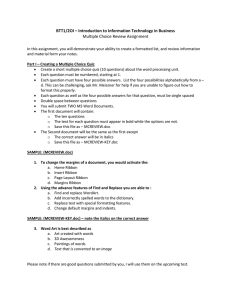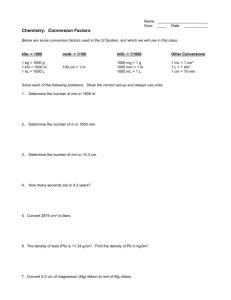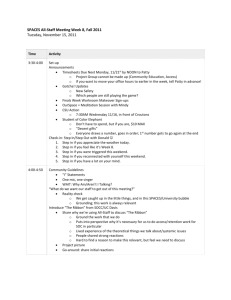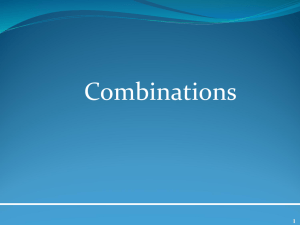II. MICROWAVE SPECTROSCOPY Academic and Research Staff
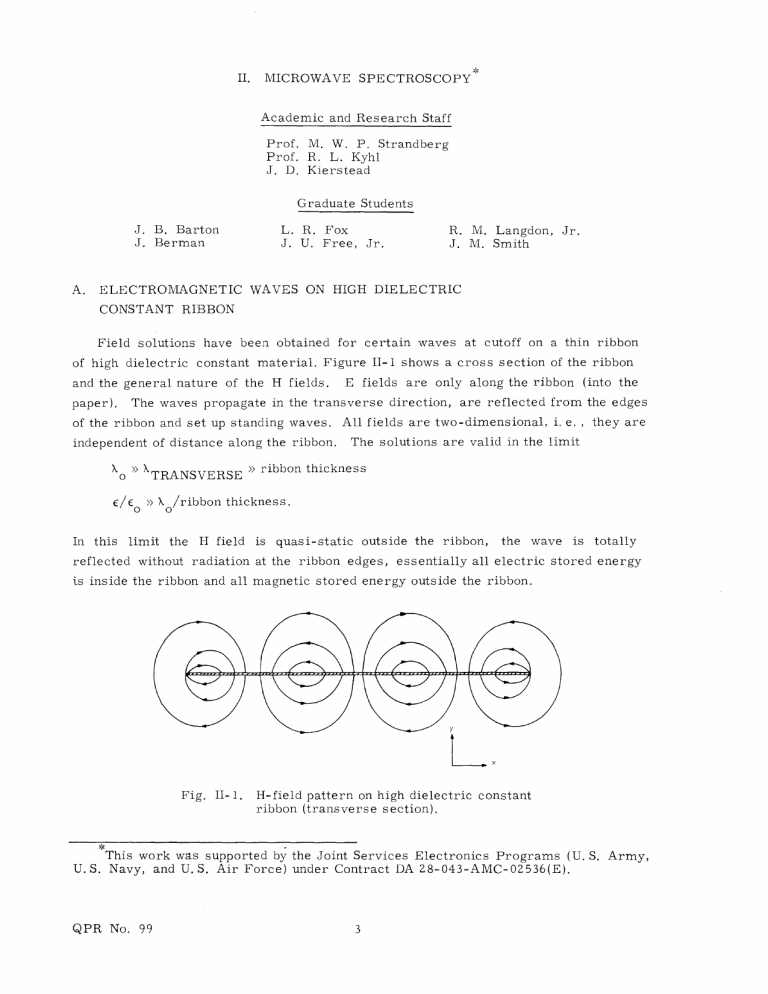
J. B. Barton
J. Berman
II. MICROWAVE SPECTROSCOPY
Academic and Research Staff
Prof. M. W. P. Strandberg
Prof. R. L. Kyhl
J. D. Kierstead
Graduate Students
L. R. Fox
J. U. Free, Jr.
R.
M. Langdon, Jr.
J. M. Smith
A. ELECTROMAGNETIC WAVES ON HIGH DIELECTRIC
CONSTANT RIBBON
Field solutions have been obtained for certain waves at cutoff on a thin ribbon of high dielectric constant material. Figure II-1 shows a cross section of the ribbon and the general nature of the H fields. E fields are only along the ribbon (into the paper). The waves propagate in the transverse direction, are reflected from the edges of the ribbon and set up standing waves. All fields are two-dimensional, i. e. , they are independent of distance along the ribbon. The solutions are valid in the limit
X >> X
o TRANSVERSE
>> ribbon thickness
E/E
>>
X /ribbon thickness.
In this limit the H field is quasi-static outside the ribbon, the wave is totally reflected without radiation at the ribbon edges, essentially all electric stored energy is inside the ribbon and all magnetic stored energy outside the ribbon.
Fig. II-1. H-field pattern on high dielectric constant ribbon (transverse section).
This work was supported by the Joint Services Electronics Programs (U. S. Army,
U. S. Navy, and U. S. Air Force) under Contract DA 28-043-AMC-02536(E).
QPR No. 99
(II. MICROWAVE SPECTROSCOPY)
H
WIDTH OF SHEET *
Fig. II-2. H in the plane of the ribbon.
The solution for waves on an infinite dielectric sheet was well known. The problem was to determine the fringing fields at the edge of the ribbon. Figure II-2 shows typical computed values of H in the plane of the ribbon. The practical result is that the fringing fields can be represented by an effective short located 185 XTRANSVERSE beyond the edge of the ribbon.
The principal significance of the work is that the mathematical method employed provides a stepping stone to the solution of more complicated configurations using high dielectric constant dielectrics. In increasing order of complexity these might be
1) waves propagating along a dielectric ribbon
2) fields at cutoff on a rectangular dielectric rod
3) resonances of a rectangular dielectric sheet
4) waves propagating along a rectangular dielectric rod
5) rectilinear dielectric resonators (rectangular block).
A series expansion method is used. It is readily shown that H diverges logarithmically at the edges of the ribbon. This suggests the use of the complex Legendre functions of the second kind, Qn' which have the appropriate singularity, and decay at infinity. They form a complete set for the purposes of this problem; that is, they can be used to expand an arbitrary function for E z or H x on the ribbon. Also they are oscillatory along the ribbon. Since E z
, although continuous, has a logarithmic singularity in its derivative at the edges of the ribbon, faster convergence can be obtained by adding
QPR No. 99
(II. MICROWAVE SPECTROSCOPY) a second set of functions with this type of singularity. The fields are thus expanded in terms of redundant nonorthogonal modes (RENO method).
The expansion coefficients are determined by an iteration method which will converge to different modes depending on the starting point. It is not necessary to insure orthogonality of the solutions for the different modes as is necessary in variational methods.
R. L. Kyhl
QPR No. 99 5

